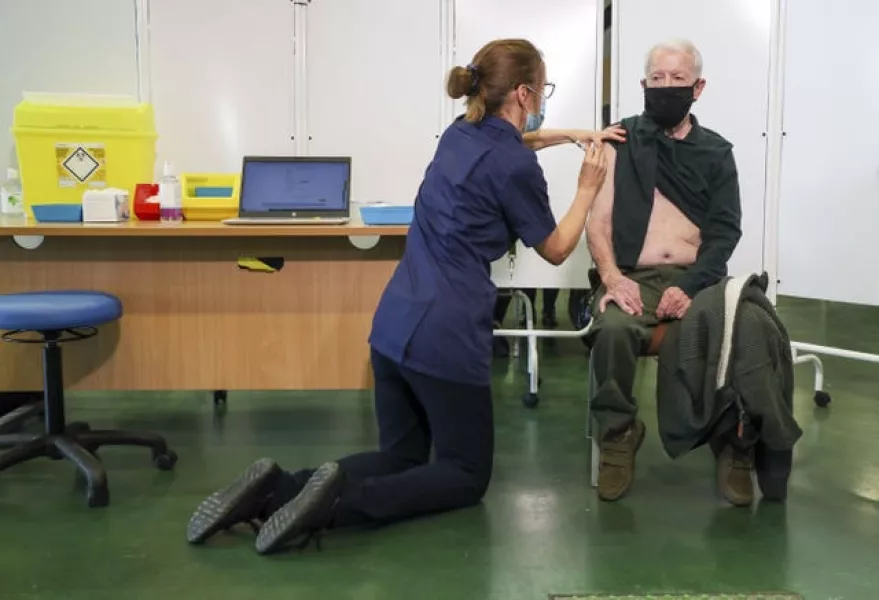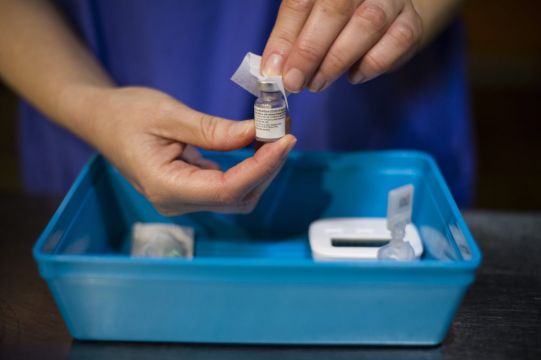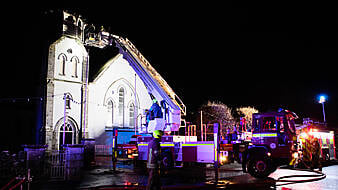Up to 15 mass-vaccination centres are being considered by the HSE to facilitate the roll-out of the coronavirus inoculation.
The Government’s high-level taskforce on Covid-19 vaccination has been in discussions with a number of third level institutions about using their facilities for the rollout.
Taskforce chairman Professor Brian MacCraith told the Oireachtas committee on health that the challenge of implementing the vaccine is “unparalleled here and around the world”.
Speaking on Wednesday, Prof MacCraith said: “At least 15 such mass-vaccination centres are under consideration by the team in the HSE at the moment.

“The exact details of how many staff will be required by vaccination centre is still being worked through at the moment.”
He said he had held discussions with Wicklow IT, NUI Galway, University of Limerick and the University College Cork about using their facilities for vaccinations.
He added: “All four of these institutions, in terms of areas like their major sports arenas and centres, were very positive in their initial response.
“These conversations and dialogue will happen over the coming weeks, in very good time, before there’s a need to actually establish the mass-vaccination centres. But there’s great positivity around these.”
Prof MacCraith said it would be difficult to give timelines on how many people will be vaccinated at different stages of the coming year.
However, it is anticipated that up to 5,000 doses of the Pfizer/BioNTech vaccine will arrive in Ireland before the end of the month.
Modelling carried out by the task force has indicated that this could mean that around 78,000 staff and residents in care facilities could be vaccinated by mid to late-February.
Prof MacCraith said: “It’s not possible to have absolute certainty on these matters.
“Let me give you one example that we’re working through in various models: If you take the residential care facilities which are in the top cohort there, so we do know that – and there’s just under 600 such facilities, about 589 is the number – and close to 78,000 between residents and staff.
“If you look at those numbers and you look at the initial cohort of vaccinators, you can start to think that that cohort might complete their vaccinations by mid to late-February, for example.”
However, Prof MacCraith warned that this was not yet fact, and would depend on how quickly the vaccine arrives in Ireland.
“The dates and numbers aren’t mentioned because it’s just, at this stage, impossible, to give you certainty around these,” he said.
Deputy chief medical officer Dr Ronan Glynn said discussions have taken place with social media companies such as Twitter and Facebook about ways to fight misinformation related to the vaccine.
However, he said it was important not to give the impression that the majority of people are vaccine-hesitant.
“Obviously we’re concerned about the issue of misinformation and the extent to which that will influence people’s intention to get vaccinated,” he said.

“It’s important that we don’t give a perception that’s the majority view.
“We know that 70 to 80% of people in Ireland, either definitely or probably, will get this vaccine when they’re offered it.
“So perhaps rather than focusing on vaccine hesitancy per se, what we should be doing is trying to promote even better levels of vaccine confidence.”
Dr Glynn said an effective communications strategy would be one of the key tools needed for a successful implementation strategy.
Professor Karina Butler, head of the National Immunisation Advisory Committee, said the vaccine provided “hope” that we can begin “a path back towards a more normal lifestyle”.
But she warned that this “will not happen overnight”.
“Vaccination is the key that will help open that pathway back to normality,” she said.
“It is very much our hope that in time this virus will be listed along with diphtheria and polio as organisms that vaccination has controlled, if not conquered.”







